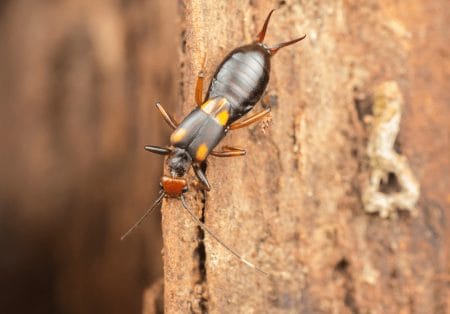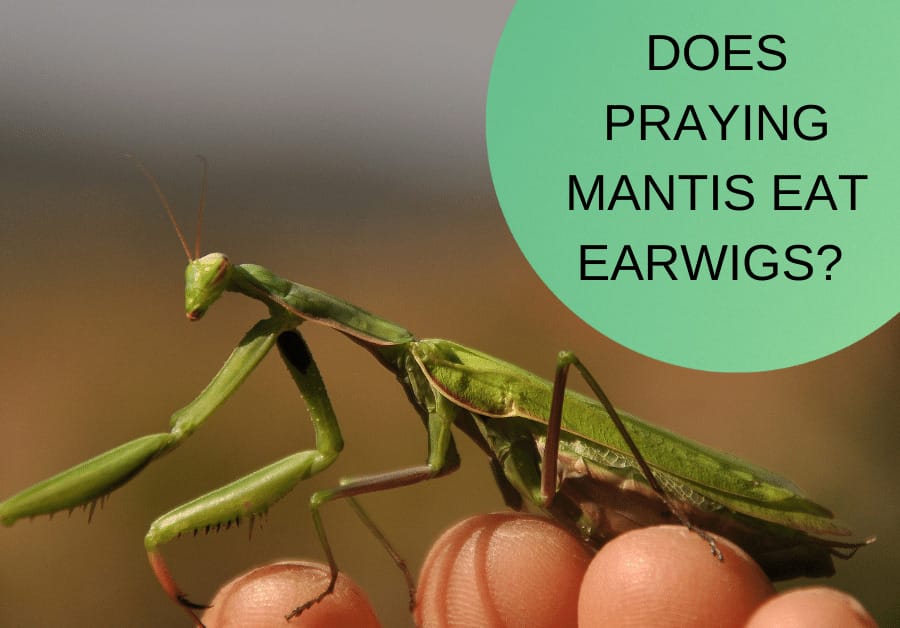
Does Praying Mantis Eat Earwigs? 4 Ways to Combat Them
Are earwigs taking over your garden? Using pesticides or getting rid of earwigs on your own is not always viable, especially if they have infested your garden in large numbers. But what if you could use a predatory insect like Praying Mantis for that job?
As a general rule, praying mantis eat earwigs and will help you to keep their population in control. However, keeping praying mantis is probably not the best solution because they also happily munch on the beneficial insects in the garden, such as honeybees and butterflies.
Read on till the end to explore more about keeping Praying Mantis in the garden and other alternative ways to keep earwigs at bay.
Should You Have Praying Mantis In The Garden As An Earwig Controller?
Praying Mantis is a predatory insect known for its huge appetite for killing and eating insects. From moths to bumble bees and wasps, all are the delicious dinner items of this ambush predator.
Here’s a chart that shows the insects that become the prey of a praying mantis:
| Pest Insects | Good Insects |
| Flies | Honey Bees |
| Moths | Bumble Bees |
| Mosquitos | Butterflies |
| Crickets | Butterflies |
| Earwigs | |
| Grasshoppers |
Although praying mantis eat many pest insects, including earwigs, unfortunately, they also happily devour beneficial insects like honey bees and butterflies. Moreover, larger Praying Mantis are known to eat hummingbirds, the beneficial pollinating birds found in the gardens.
Due to the above reasons, it's not a great idea to use a praying mantis to get rid of insects.
But still, if you are interested, let's see how you can have a praying mantis in your garden. And read on because, in the subsequent sections, we will also share the alternative ways to keep earwigs away.
How To Encourage / Invite Praying Mantis Into Your Garden For Pest Control?
Attract Praying Mantis To Your Garden
One of the first things you should do to lure praying mantises to your garden is to look around and see if any are hiding there.
Praying mantises are commonly found in or attracted to organically cultivated gardens; therefore, cultivating a bug-friendly environment is an effective strategy for luring these predatory insects.
Plants in the rose, raspberry families, and tall grasses are known to tempt praying mantis to a garden.
The praying mantis's favorite activity is hiding. Give them some plants that grow low to the ground to hide under. For your praying mantis, ensure they have water access throughout the warmer months.
In the garden, set out a small dish filled with rocks. Praying mantids may drink from the dish by climbing in and out of the water.
If you don't want to attract mosquitoes and risk harming the praying mantis, fill the water in a shallow dish. You can use homemade bait to bring in these helpful critters. Add 1 tbsp of sugar to 10 tbsp of water and stir.
Blend and spread out in a wide dish. The praying mantis will like this dish and will enjoy eating it.
Raise Praying Mantis From Eggs
To protect your garden from the swarms of insects that appear in the summer, release some praying mantises. Although they will eat just about everything, even each other, they are especially useful in the garden because they eliminate earwigs, flies, moths, etc.
Starting with cannibalistic mating, their life cycle continues through the egg stage, the nymph stage, and eventually, maturity.
Egg sacs of the praying mantis are common across most of North America, but you may have to buy them if you live in a colder climate.
Knowledge about praying mantis egg sacs is a necessary first step in locating these structures in the environment.
As the temperatures rise in the spring, these predatory insects start to come out from their eggshells. Thus, you should start seeking cases from late autumn until early spring.
You can find eggs on twigs, branches, fences, and walls. Although the sacs aren't always noticeable, they're much easier to identify once the leaves fall off.
Praying mantis egg cases are roughly one inch long, brown to white, and shaped like a rounded rectangle. A foamy coating forms a protective shell around the eggs. Ootheca is the name for the foam produced.
You can observe the sac's development by placing it in a jar with air holes if you come across one.
If you get the sac in the late winter, the insects will hatch immediately, and if they are young, they will hatch within 4-6 weeks. Tiny adults with great appetites, that's what the nymphs will seem like when they finally emerge.
Letting them out into the garden will allow them to start working immediately. However, if it's going to be too cold for the young to survive outside, you shouldn't encourage hatching and release.
Care for and handling adult mantids is significantly simpler. They will probably stick around as long as there are lots of insects to eat and safe places to hide.
Adult mantids are simple to capture, and you can set them free amid garden vegetation.
4 Alternative Ways To Keep Earwigs At Bay

Earwigs may be just as much of a nuisance as other garden pests. When left unchecked, earwigs are a common garden insect that may damage your plants. So getting rid of them is essential.
1. Set Up Earwig Traps:
To get rid of earwigs, set up some oil pit traps. Put soy sauce and vegetable oil into a small plastic container and close the top.
Ensure to make many holes at the top of the container's lid. You need to make the holes big for earwigs to fit through.
You should bury the container till the holes are visible and open for the earwigs to enter. The soy sauce will lure the earwigs in, but the oil will not allow the earwigs to get out easily. Adjust the proportions as necessary.
2. Use Diatomaceous Earth:
This organic insecticide is effective against earwigs and other insects, but it takes time to work. Spreading the powder with a tiny spoon along baseboards or insect paths would be best. The powder will attach to the exoskeleton of the earwigs, causing them to dry up and finally die.
3. Spray Dish Soap:
Instead of using harmful pesticides, fill a spray bottle with dish soap and water and then spray it on earwigs.
4. Use Petroleum Jelly:
Apply petroleum jelly to the area around the plant's stems. Earwigs will think twice before crawling on it.
Got gnats? Yeah, we don't like them either. Read Fungus Gnats: Top 17 Ways To Kill Them And Protect Your Plant
Conclusion
In conclusion, earwigs can be a nuisance, but there are ways to get rid of them. praying mantis are amazing predators that can help keep your earwig population under control. They're an all-natural solution that won't harm your plants. Following the tips above, you can create a mantis-friendly environment in your garden and enjoy watching these fascinating creatures do their business.



